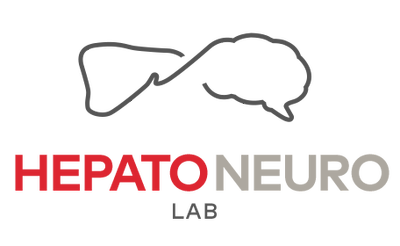Hepatic encephalopathy (HE) is a neuropsychiatric syndrome observed in chronic liver disease (CLD/cirrhosis). With an increasing prevalence of obesity-induced cirrhosis and evidence linking blood-derived lipids to neurological impairment, we hypothesize that obesity increases the risk, severity and progression of HE. AIM: Investigate the synergistic effect of obesity and CLD on the development of neurological impairment in a novel rat model of cirrhosis and obesity. M&M: Animal model of CLD and HE: 5-week bile-duct ligation (BDL) rats and Sham-operated controls, were used. Groups: Obese-BDL and Obese-Sham received high-fat diet (HFD) for 25-days pre-BDL and high-carbohydrate diet (HCD) for 5-weeks post-BDL; Lean-BDL and Lean-Sham received regular-diet (RD) pre-BDL and HCD post-BDL. Body-weight and fat-mass (EchoMRI) were monitored pre-BDL as well as 3- and 5-weeks post-BDL. Behavior: Motor-coordination, motor skill-learning, and muscular-strength were assessed at 3- and 5-weeks post-BDL. Locomotion and anxiety were measured at 5-weeks. Plasma ammonia, liver enzymes, and lipids were measured at 3- and 5-weeks. RESULTS: Before BDL surgery, body-weight and fat-mass of rats on HFD increased compared to rats on RD. 3-week post-BDL, body-weight and fat-mass decreased in Lean-BDL and Obese-BDL vs respective Shams, while at 5-weeks this was only found in Lean-BDL. These parameters were higher in Obese-BDL vs Lean-BDL at 3- and 5-weeks. Plasma ammonia, bilirubin, albumin, ALT, AST, and ALP were impaired in Obese- and Lean-BDL vs respective Shams at 3- and 5-weeks. AST and ALP increased in Obese-BDL vs Lean-BDL at 5-weeks. Elevated HDL-cholesterol and decreased LDL-cholesterol were detected in Obese-BDL and Lean-BDL vs respective Shams at 3- and 5-weeks, while LDL-cholesterol was higher in Obese-BDL vs Lean-BDL at 5-weeks. Total-cholesterol increased in Obese-BDL vs all groups at 5-weeks. At 3 weeks; motor-coordination was reduced in Obese-BDL, but not in Lean-BDL vs respective Shams, while at 5-weeks, motor-coordination decreased in both Lean-BDL and Obese-BDL vs respective Shams, with worse performance in Obese-BDL vs Lean-BDL. At 3-weeks, skill-learning improved in all Shams and Lean-BDL, but not in Obese-BDL; at 5-weeks contrary to Sham-groups, both BDL groups did not improve performance. Muscle-strength decreased in Lean-BDL and Obese-BDL vs respective Shams at 3- and 5-weeks. Hypolocomotion and anxiogenic effects were detected in Obese-BDL, but not in Lean-BDL vs Shams at 5-weeks. CONCLUSION: HFD induces obesity pre-BDL which is maintained post-BDL with a HCD-diet which was accompanied with increase fat-mass and hyperlipidemia. Neurological decline in obese-cirrhotic rats developed earlier and was more severe versus Lean-BDL rats. Besides, some neurological impairments developed in Obese-BDL but not in Lean-BDL. These results suggest a synergistic effect, which accelerates/worsens the disease-associated abnormalities in CLD and HE.

